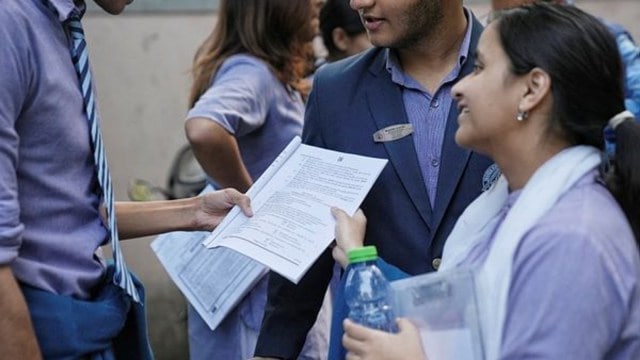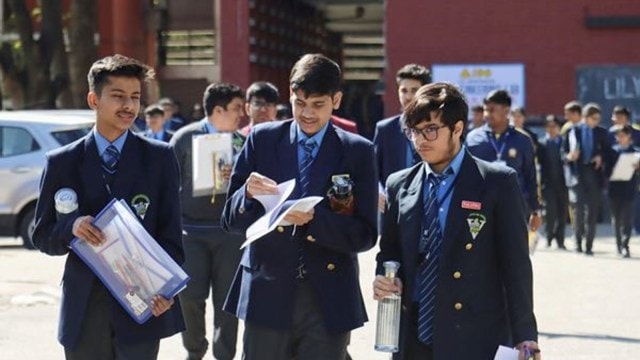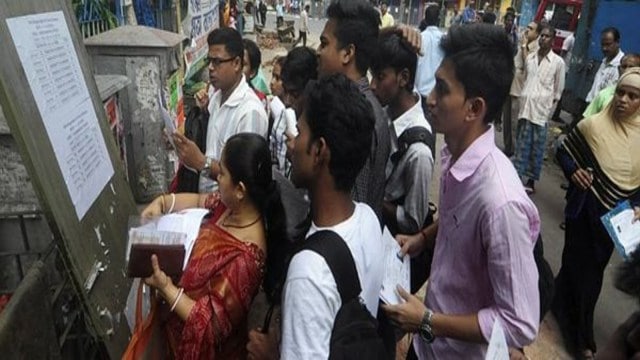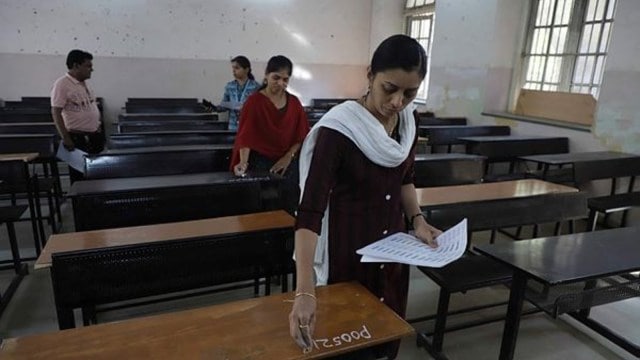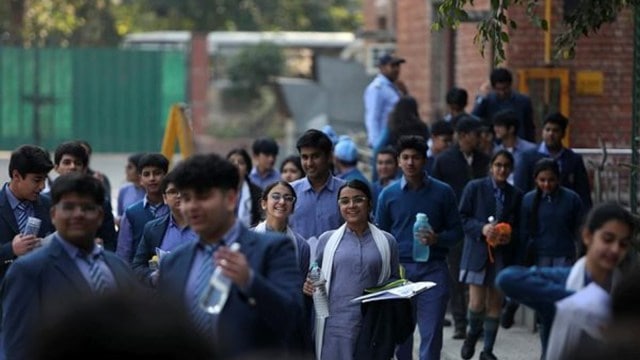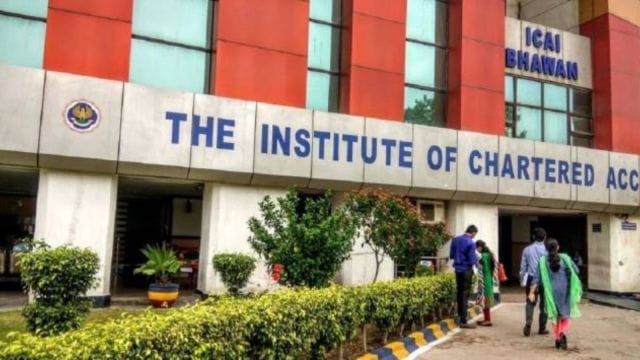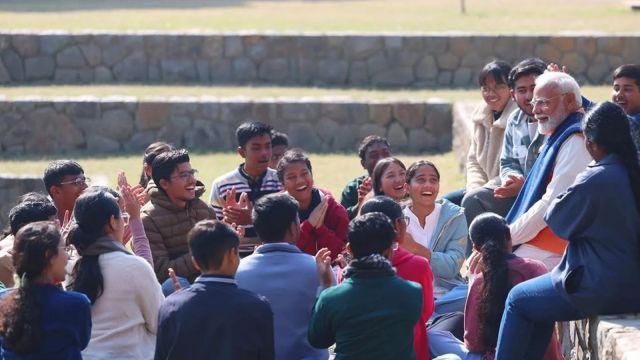
UPSC Key: India-Canada relationship, Bulldozer justice, and Foreign Portfolio InvestorsSubscriber Only
Syllabus:
Preliminary Examination: Current events of national and international importance
Mains Examination: General Studies-II: Bilateral, regional and global groupings and agreements involving India and/or affecting India’s interests
What’s the ongoing story: In a decision that will impact applicants from India — and at a time when diplomatic ties between the two countries are strained — Canada ended its popular, fast-track student visa programme with effect from Friday.
Key Points to Ponder:
• What is the status of the India-Canada relationship?
• What are the reasons for the recent constraints on the India-Canada relationship?
• What is the Kalistan movement?
• What is Canada’s approach to Khalistani separatism?
• How will the increasing tension in India-Canada relations affect the Indian Diaspora?
Key Takeaways:
• The Student Direct Stream (SDS) programme was launched in 2018 to provide faster processing for eligible post-secondary students from 14 countries, including India. Besides a shorter processing time, the approval rates were also higher under the programme.
• Under the SDS programme, students could secure study permits in just 20 working days, even as processing times under the standard route often extend to around eight weeks for Indian applicants.
• India is Canada’s largest source country of foreign students with an estimated 4.27 lakh Indian students studying there in 2023.
• The SDS programme was available to residents of Antigua and Barbuda, Brazil, China, Colombia, Costa Rica, India, Morocco, Pakistan, Peru, Philippines, Senegal, St. Vincent and the Grenadines, Trinidad and Tobago, and Vietnam.
• The Canadian government said it was looking to reduce the number of temporary residents in the country, after hosting a record 8 lakh study permit holders last year, with the need to alleviate pressures on housing and services.
• Launched in 2018, the Student Direct Stream programme aimed to simplify the visa application process for students from 14 countries, including India and China, who met specific requirements. A Canadian Guaranteed Investment Certificate worth $20,635 CAD (Rs 12.51 lakh) and English/ French language test scores were among these requirements.
Do You Know:
• The Khalistan movement is a fight for a separate, sovereign Sikh state in present day Punjab (both India and Pakistan). Over the years, it has survived in various forms, in various places and amongst different populations.
• The Khalistan movement was crushed in India following Operation Blue Star (1984) and Operation Black Thunder (1986 and 1988), but it continues to evoke sympathy and support among sections of the Sikh population, especially in the Sikh diaspora in countries such as Canada, the UK, and Australia.
Other Important Articles Covering the same topic:
????UPSC Issue at a Glance | India-Canada Diplomatic Row
????Knowledge Nugget of the day: Khalistan movement
Previous year UPSC Mains Question Covering similar theme:
???? ‘Indian diaspora has a decisive role to play in the politics and economy of America and European Countries’. Comment with examples. (UPSC CSE 2020)
Syllabus:
Preliminary Examination: Indian Polity and Governance – Constitution, Political System, Panchayati Raj, Public Policy, Rights Issues
Mains Examination: General Studies II: Government policies and interventions for development in various sectors and issues arising out of their design and implementation
What’s the ongoing story: “Justice through bulldozers is unknown to any civilized system of jurisprudence” and “is simply unacceptable under the rule of law”, the Supreme Court has said.
Key Points to Ponder:
• What is the Right to Property?
• How are the constitutional provisions related to the Right to property?
• What is bulldozer justice?
• Is the right to property a legal right?
• What are the important SC rulings on the right to property?
Key Takeaways:
• A bench of Chief Justice of India D Y Chandrachud and Justices J B Pardiwala and Manoj Misra said that “if it were to be permitted, the constitutional recognition of the right to property under Article 300A would be reduced to a dead letter.”
• The court said this in its November 6 order by which it directed the Uttar Pradesh government to pay Rs 25 lakh as compensation to a man whose house was demolished for a road-widening project in 2019 without giving him due notice.
• The order, made available Saturday, said that the petitioner alleged that the demolition was “reprisal” for a newspaper report which contained allegations of wrongdoing in relation to the construction of the road in question.
• Calling for due process, the court said that it proposed to lay down certain “minimum thresholds of procedural safeguards” which must be fulfilled before the state takes action to remove illegal encroachments or unlawfully constructed structures.
• It also laid down guidelines authorities should follow before acting against alleged encroachment in a road-widening project.
• According to these, authorities must ascertain the width of the road as per maps and find if there’s any existing encroachment. If one is found, the court said, a “proper, written notice” should be sent to encroachers to remove the encroachment.
• If the notice raises an objection, the court said, it should be decided by a speaking order in “due compliance with the principles of natural justice.”
Do You Know:
• The Supreme Court has spoken out against “bulldozer justice” — the practice of state governments demolishing homes and properties of people accused in crimes, in the guise of acting against “illegal encroachment”.
• The highest court of the land has called out such brazen misuse of power and miscarriage of justice by its name after families and businesses have been destroyed and rights of citizens violated in irreversible ways. Indeed, over the past few years, “bulldozer justice” has become a mis-governance model, a morbid political template across states…
Other Important Articles Covering the same topic:
????‘Bulldozer justice’: As SC talks tough, a look at how it became the go-to for some state governments
????SC’s stand against ‘bulldozer justice’ is welcome — but it may be too little too late
Previous year UPSC Prelims Question Covering similar theme:
1. What is the position of the Right to Property in India? (UPSC CSE 2021)
(a) Legal right available to citizens only
(b) Legal right available to any person
(c) Fundamental Right available to citizens only
(d) Neither Fundamental Right nor legal right
Syllabus:
Preliminary Examination: Current events of national and international importance
Mains Examination: General Studies II: Government policies and interventions for development in various sectors and issues arising out of their design and implementation
What’s the ongoing story: The Ministry of Tribal Affairs has directed the Maharashtra government to address complaints of “non-recognition of forest rights and forced eviction” raised by families living in Rantalodhi village inside the core area of Tadoba-Andhari Tiger Reserve.
Key Points to Ponder:
• What is the role and function of the National Tiger Conservation Authority (NTCA)?
• What was the purpose of enacting the Forest Rights Act (FRA)?
• What are the issues in the implementation of the Forests Rights Act?
• What are the recent amendments in the FRA?
• Know about the Forest Rights Act, Wildlife Protection Act and the Scheduled Castes and Scheduled Tribes (Prevention of Atrocities) Act.
• Map Location: Tadoba-Andhari Tiger Reserve
Key Takeaways:
• On October 21, the ministry wrote to the Tribal Development Department of the Maharashtra government, the National Tiger Conservation Authority (NTCA) and Chandrapur District Collector Vinay Gowda to address a petition sent to it.
• The petition by families living in Rantalodhi, Bhadravati tehsil in Chandrapur district, alleged that the forest department was forcing them to relocate in violation of the provisions of Forest Rights Act, Wildlife Protection Act and the Scheduled Castes and Scheduled Tribes (Prevention of Atrocities) Act.
• It sought action against the district administration and the forest department for the alleged violations. The petition stressed that even though claims under the Forest Rights Act were filed in 2010, they were still pending and, in some cases, rejected and appeals were also pending.
• Under the Wildlife Protection Act, tribal communities and forest dwellers living inside national parks and tiger reserves can be relocated only after obtaining informed consent from the Gram Sabha and after establishing that human presence will harm wildlife. Villages are relocated to create spaces free of human settlements and for movement of animals.
Do You Know:
• The Forest Rights Act of 2006 promises to give ownership rights to the forest dwellers who have been living on their land for at least three generations or 75 years. The law also offers community ownership rights over forest lands that these people are dependent upon for their livelihood.
• The FRA recognises both individual forest rights (IFRs) and community forest rights (CFRs), which are claimed by gram sabhas. Scrutiny takes place at four levels — gram sabha, sub-divisional level committee (SDLC), district-level committee (DLC), and state-level monitoring committee (SLMC).
Other Important Articles Covering the same topic:
????In 153 LS seats, forest rights likely to be major poll issue
????Framing the forest rights debate
Previous year UPSC Prelims Question Covering similar theme:
2. At the national level, which ministry is the nodal agency to ensure effective implementation of the Scheduled Tribes and Other Traditional Forest Dwellers (Recognition of Forest Rights) Act, 2006? (UPSC CSE 2021)
(a) Ministry of Environment, Forest and Climate Change
(b) Ministry of Panchayati Raj
(c) Ministry of Rural Development
(d) Ministry of Tribal Affairs
Syllabus:
Preliminary Examination: Economic and Social Development – Sustainable Development, Poverty, Inclusion, Demographics, Social Sector Initiatives, etc
Mains Examination: General Studies III: Indian Economy and issues relating to planning, mobilisation, of resources, growth, development and employment.
What’s the ongoing story: The sustained sell-off by foreign portfolio investors (FPIs) since October this year hasn’t deterred new FPIs from seeking permission to invest in Indian markets. Applications of about 40-50 new FPI registrations have come to the market regulator Securities and Exchange Board of India (Sebi) during the month.
Key Points to Ponder:
• What is the FPI?
• What is the role and function of SEBI?
• What is the significance of FPI?
• How do domestic and international factors affect the FPI in India?
• What is the impact of FPI selloff?
• How the recently concluded US election is impacting FPI in India?
Key Takeaways:
• The number of FPIs registered with the Sebi was 11,219 as of March 2024. Only 138 FPIs had registered with the Sebi in full fiscal 2023-24. This means an average of 12-13 FPI registrations every month.
• “All thanks to Sebi’s recent relaxation to NRIs, permitting them to participate up to 100 per cent and announcing measures for ease of entry and operations in India,” he said. Though FPI community had been very cautious about Indian markets in the last couple of months, shifting their allocation to other countries like China, India still stands on better footing as compared to other markets.
• “The major factors attributable are political certainty, long term growth, better yields, substantial capex spending by the government and last but not the least, the central bank’s vigilant approach while announcing rate cuts to put a check on inflation,” Purohit said.
• The offshore participants are optimistic that the RBI will adopt a balanced approach to ensure the cost of raising funds is under control and is made easily accessible to India Inc in the upcoming quarter’s announcement, he said.
• Additionally, the outcome of the recent election results held in the US has created an optimism for the Indian market considering the strategic partnership between the two countries. This will boost the economic and mutual businesses and other foreign trade policies which will make India more lucrative for foreign investments.
Do You Know:
• The bearish sentiment in the market has been partly attributed to concerns over sluggish corporate commentary and potential earnings cuts, which is leading to a re-rating of stock valuations. Then there are two other factors that could be at play.
• Domestic investors such as mutual funds are not seen to be buying as much as what the foreign portfolio investors are offloading in the current rally, in contrast to earlier corrections when an FPI selloff was generally seen as a buying opportunity by domestic funds.
• Also, there is a growing realisation that the interest rate cut by the Reserve Bank of India that was earlier expected by December is unlikely to happen anytime before the end of the current fiscal. Repeated RBI commentary on the persistent inflationary risks is being seen as indicative of the possibility of any fresh rate action being pushed to further into 2025.
• All of these factors seem to be overshadowing the expectation of a general pickup in government spending, which has been lacklustre during the first half of this financial year.
Other Important Articles Covering the same topic:
????US elections and the Chinese stimulus: two triggers that outweighed domestic factors in Monday’s FPI selloff
Previous year UPSC Prelims Question Covering similar theme:
3. Which of the following is issued by registered foreign portfolio investors to overseas investors who want to be part of the Indian stock market without registering themselves directly? (UPSC CSE 2019)
(a) Certificate of Deposit
(b) Commercial Paper
(c) Promissory Note
(d) Participatory Note
Syllabus:
Preliminary Examination: Economic and Social Development – Sustainable Development, Poverty, Inclusion, Demographics, Social Sector Initiatives, etc
Mains Examination: General Studies III: Indian Economy and issues relating to planning, mobilisation, of resources, growth, development and employment.
What’s the ongoing story: With Trump’s reelection as the United States’ President, tech company heads and workers have to contend with a new reality. While many of them have typically voted for the Democratic Party, with some publicly supporting Kamala Harris’s election bid and some sitting on the fence publicly, they will all face the consequences of Trump’s new term in office.
Key Points to Ponder:
• What was the US antitrust ruling against Google and its implications for India?
• What is an H1-B visa?
• What was the impact of the trade war between the USA and China on India?
• What are the areas of cooperation between India and the US?
• What could be the potential impact on the Indian economy following the change in leadership in the United States?
Key Takeaways:
• Under Trump’s first tenure, a number of movements happened in the tech space, which saw the beginning of antitrust action against companies like Meta, Google Apple and Amazon; the trade war with China, which prevented the export of some high-end American-made hardware solutions to Beijing.
• In his reelection bid, Trump spoke against the Biden administration’s move to breakup Google, even though the investigation into the company started in his term. His stance on TikTok’s fate in the US remains uncertain and has been marked by flip-flops, and his protectionist stance against China could pose a challenge to companies like Apple.
• Trump’s victory marks vindication for at least one tech mogul – Elon Musk. He put his entire weight behind Trump in a way that no business person has done in the past for any Presidential nominee, which included funding his campaign and turning social media platform X into a pro-Trump megaphone.
• During his campaigning, Trump had proposed a 60% tariff on goods from China — and a tariff of up to 20% on everything else the United States imports. This was widely seen as an impediment to companies like Apple, which have a big manufacturing base in the country.
• There is another layer to Trump’s actions against China. His newfound ally Elon Musk. Musk’s Tesla has major business interests in China where the company has a big manufacturing base, and any action on China by Trump could have a potential bearing on Tesla’s business in Beijing.
• Analysts and experts said there are several ‘ifs and buts’ relating to the opportunities for Indian tech firms. If the past record of the Trump administration is any indication, Indian tech firms are set to gain from Trump’s new plans while H1-B visa holders are expected to face some uncertainties.
Do You Know:
• “Five themes of concern for India stand out from Trump’s worldview.
1. First is Trump’s plan to “dismantle the regulatory state,” dramatically downsize the bureaucracy, and make it easier for US capital to invest and develop new technologies.
2. Second, Trump is determined to re-industrialise America. He has argued repeatedly that globalisation has played havoc with US manufacturing and the industrial working class.
3. Third, immigration has been one of the issues that has propelled Trump to his historic political comeback in this election. Although his anti-immigration rhetoric has caused much concern in India, Trump has sought to differentiate between “legal” and “illegal” immigration….India will have a deep interest in contributing to the US debate on separating the “bad” immigration from the “good”.
4. Trump’s relationship with China and Russia will be of special interest to Delhi. It was under the first Trump administration that the Quadrilateral framework was revived in 2017. There is no reason to expect that the second would dilute its commitment to limit Chinese power in Asia and the Indo-Pacific.
5. Finally, the Biden years have seen a significant expansion of defence and high technology cooperation between Delhi and Washington. Sustaining and expanding this under the Trump Administration will be a key priority for Delhi.
Other Important Articles Covering the same topic:
????The US antitrust ruling against Google
????Trump victory: Tech sector set to gain, but face challenges
Previous year UPSC Mains Questions Covering similar theme:
What is the significance of Indo-US defence deals over Indo-Russian defence deals? Discuss with reference to stability in the Indo-Pacific region. (UPSC CSE 2020)
‘What introduces friction into the ties between India and the United States is that Washington is still unable to find for India a position in its global strategy, which would satisfy India’s National self-esteem and ambitions’. Explain with suitable examples. (2019)
Syllabus:
Preliminary Examination: Current events of national and international importance
Mains Examination: General Studies II: Important International institutions, agencies and fora- their structure, mandate
What’s the ongoing story: India has slammed Pakistan at the United Nations for peddling “falsehood” after it referred to Jammu and Kashmir during a debate on peacekeeping operations. Member of the Rajya Sabha and national spokesperson of BJP Sudhanshu Trivedi, who is part of a delegation of Indian MPs visiting the UN, asserted that the Union Territory of Jammu and Kashmir “was, is and will remain an integral part of India”.
Key Points to Ponder:
• Why the United Nations was formed?
• What is the role of India in the UN peacekeeping mission?
• What is the UN Security Council?
• What are the issues with the UNSC?
• What is the UNSC reform advocated by India?
• What is the United Nations Military Observer Group in India and Pakistan (UNMOGIP)?
Key Takeaways:
• “The people of Jammu and Kashmir have recently exercised their democratic and electoral rights and elected a new government. Pakistan must desist from such rhetoric and falsehood because it will not alter the facts,” Trivedi said. His remarks came during a debate on peacekeeping operations at the Special Political and Decolonization (Fourth Committee) of the UN General Assembly in New York on Friday.
• Trivedi delivered India’s strong response after the Pakistani delegate spoke about the United Nations Military Observer Group in India and Pakistan (UNMOGIP), mandated to supervise the ceasefire along the Line of Control.
• Trivedi is part of a delegation of 12 Rajya Sabha MPs — including Congress’s Rajiv Shukla, DMK’s Tiruchi Siva and BJD’s Sasmit Patra — who are on a visit to the UN for diverse engagements at the world body.
• Shukla also stressed that inclusive access to information is essential for fostering trust, accountability and good governance.
Do You Know:
• The devastation of WWI (1914-1918) persuaded former US President Woodrow Wilson that establishing firmer institutional structures would help make the world safe to live in. He articulated his vision for a peaceful and cooperative world order in his famous Fourteen Points speech in January 1918.
• Wilson’s vision found concrete shape in the form of the League of Nations at the Paris Peace Conference in 1919. The Covenant of the League of Nations was incorporated into the Treaty of Versailles, the peace treaty that officially ended WWI.
• However, after the outbreak of WWII in 1939, the League of Nations was seen as a failure and disbanded in 1946. Nonetheless, the League of Nations laid the groundwork for the establishment of a stronger international organisation with a unique institutional structure.
• In 1941, American President Franklin D. Roosevelt and British Prime Minister Winston Churchill during a secret meeting envisioned an international organisation aimed at maintaining peace and order in post-war international politics.
• They issued the Atlantic Charter outlining their vision of a free and peaceful future. This document laid the foundation for international collaboration during the war and a permanent system for general security.
• On 1 January 1942, 26 countries signed the declaration of the United Nations. The document contained the official use of the name United Nations which was originally coined by Roosevelt to identify those countries which were allied against the Axis powers – Germany, Italy and Japan.
Other Important Articles Covering the same topic:
????United Nations Day 2024: India continues to push for Security Council Reform
????United Nations Day 2024: 3 interventions that helped shape the organisation
Previous year UPSC Prelims/Mains Question Covering similar theme:
4. With reference to the United Nations General Assembly, consider the following statements: (UPSC CSE 2022)
1. The UN General Assembly can grant observer status to the non-member States.
2. Inter-governmental organisations can seek observer status in the UN General Assembly.
3. Permanent Observers in the UN General Assembly can maintain missions at the UN headquarters.
Which of the statements given above are correct?
(a) 1 and 2 only
(b) 2 and 3 only
(c) 1 and 3 only
(d) 1, 2 and 3
For your queries and suggestions write at khushboo.kumari@indianexpress.com
The Indian Express UPSC Essentials brings to you the October issue of its monthly magazine. Click Here to read. Share your views and suggestions in the comment box or at manas.srivastava@indianexpress.com
Subscribe to our UPSC newsletter. Stay updated with the latest UPSC articles by joining our Telegram channel – IndianExpress UPSC Hub, and follow us on Instagram and X.

 Posts
Posts Sign up as a Teacher
Sign up as a Teacher